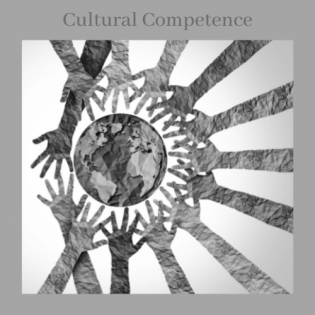Race and Ethnicity
Looking around the room, we may see many skin colors and tones. These differences occur all over the world. In this lesson we use the terminology of race and ethnicity and look at data to identify the makeup of our community or state. Young people may take action to promote representation of the groups that are under-represented in the community.
identify the racial demographic of your community
- Internet access for each participant
- chart paper, markers, and rulers to create graphs
- read aloud copy of Skin Like Mine by Latisha M. Perry
Find your local demographic data in advance so that you can support the youth as they research. Here are some trusted resources:
- U.S. Census
- Data USA
- National Center for Education Statistics
- States may also have racial census reports listed by school district. Search on your state’s website for this data.
Note: In order to discuss race and ethnicity with youth, the facilitator must be willing to explicitly use the terminology of race (white, Black or African American, Latinx, Native American, etc.). Using this language comfortably will encourage youth to do the same, and not treat race as taboo. Also remember what terminology the young people used when they self-identified during the introductory culture lesson and try to use the same.
- race: a group that shares outward physical traits, such as skin color
- ethnicity: a group that shares non-physical attributes, such as nation of origin, cultural identity or tribe
Examples of the difference might include identifying with White as a race, and Italian as an ethnicity; or a dark-skinned person of Cuban ancestry might identify with Black as their race, and Hispanic as ethnicity.
Note: the difference between race and ethnicity might be hard for the group to understand. That’s okay. Adults still struggle with the concept too! The most important thing is to introduce the idea.
Encourage the youth to talk with their families about their own heritage. Kids often learn surprising or interesting things when they talk to their grownups during this unit!
Does your area’s demographic data match what you expected? Does it match your group? Why do you think that is?
- Skin Like Mine by Latashia M. Perry
- For younger learners: “Explaining Race” from Sesame Workshop https://youtu.be/Dk_HYAiS26I
Instructions
Anticipatory Set:
Ask the group to look around the room at each other. Is everyone the same color? What differences do they notice? Inform the youth that differences in skin color happen all over the world and that they will learn about those differences.
Read aloud the book Skin Like Mine. Notice the tasty-sounding descriptions the author uses for different skin tones. Ask the children how they would describe their own skin color.
Go over the definitions of race and ethnicity (see above). Young people may have questions. Just do your best!
Using the Internet and suggested links above, have the youth research the racial demographic data for your town, county and/or school (multiple layers of data could be interesting to reflect on).
Together, create a visual representation of the demographic data of the area (graph, infographic, chart) that the group can refer back to as they continue to learn about these topics.
If you are working with a younger group, here are some modifications:
- Use this "Explaining Race" video from Sesame Workshop: https://youtu.be/Dk_HYAiS26I
- Instead of researching, provide basic race demographics for the group and create a simple bar graph to illustrate.
Explain to the group that being aware of these demographics can help them to be mindful community members as they build their cultural competence.
Giving back to the community: In what ways does your school or organization acknowledge the diversity of its population? What more can the group do to ensure that all races and ethnicities feel included? (e.g., think about posters and other visuals around the space. Do they showcase different races? If in a school, are there any packs of multicultural crayons available?)
Philanthropy Framework
-
Strand PHIL.II Philanthropy and Civil Society
-
Standard PCS 02. Diverse Cultures
-
Benchmark MS.1 Examine several examples of philanthropic traditions practiced in diverse cultures.
-
Benchmark E.1 Give examples of philanthropic traditions of diverse cultures.
-
-
